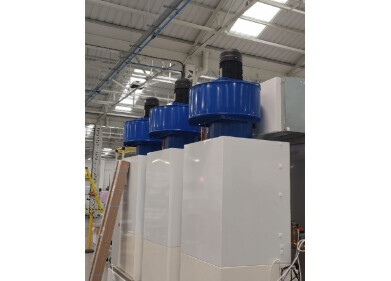Laboratory Products
Can You Control the Brain Through an App?
Sep 03 2019
In a breakthrough study pioneered by Korea and the United States, a team of researchers has developed a smartphone-controlled app capable of manipulating brain cells. The app controls a tiny, non-intrusive brain implant that influences neural circuits using combination of low-energy Bluetooth light and replaceable drug cartridges.
Scientists pioneer wireless drug delivery device
The findings were published in Nature Biomedical Engineering and explain how the scientists, some working from the University of Washington Health Sciences/UW Medicine department, used the device to influence certain brain neurons with light and drugs. According to the team, the app-controlled device could offer new insight into brain diseases such as Alzheimer's and Parkinson's, as well as depression, addiction and chronic pain.
"The wireless neural device enables chronic chemical and optical neuromodulation that has never been achieved before," asserts Raza Qazi, lead author of the study and researcher at the Korea Advanced Institute of Science and Technology (KAIST) and University of Colorado Boulder.
Introducing 'plug-n-play' drug cartridges
Qazi says the advanced smartphone technology outperforms traditional technologies used to influence neural circuits, which are usually powered by harsh optical fibres and inflexible metal tubes. The bulky and rigid equipment not only limits the movement of patients but can also damage soft brain tissue and make the implants unsuitable for long-term use. Depletion of drugs also means traditional techniques can only be used for short periods of time.
The new smartphone-controlled device offers a clever solution to the problem by using replaceable 'plug-n-play' drug cartridges. This allows neuroscientists to deliver drugs to brain circuits for months on end, without the concern of depleting the supply.
Advanced design and nanoscale engineering
The device is assembled using a flexible, ultrathin probe that resembles a human hair. Drugs are released through microfluidic channels, with miniscule LEDs used to trigger deliveries. The entire process is controlled though a simple, user-friendly smartphone app that can be used to tweak light and drug deliveries to fit the unique needs of the patient.
"This revolutionary device is the fruit of advanced electronics design and powerful micro and nanoscale engineering," says Jae-Woong Jeong, a professor of electrical engineering at KAIST. "We are interested in further developing this technology to make a brain implant for clinical applications."
Michael Bruchas, a professor at the University of Washington School of Medicine, says the technology breaks new ground for neural research. "It allows us to better dissect the neural circuit basis of behaviour, and how specific neuromodulators in the brain tune behaviour in various ways," he says. "We are also eager to use the device for complex pharmacological studies, which could help us develop new therapeutics for pain, addiction, and emotional disorders."
From neural research to drug development, laboratories play a pivotal role in advancing scientific research. For a closer look at the latest challenges faced by the industry, including Brexit and a softening in the market for new equipment, don't miss 'Lab firms look to their service sections to ensure ongoing growth.'
Digital Edition
Lab Asia 31.2 April 2024
April 2024
In This Edition Chromatography Articles - Approaches to troubleshooting an SPE method for the analysis of oligonucleotides (pt i) - High-precision liquid flow processes demand full fluidic c...
View all digital editions
Events
Apr 22 2024 Marrakech, Morroco
Making Pharmaceuticals Exhibition & Conference
Apr 23 2024 Coventry, UK
Apr 23 2024 Kintex, South Korea
Apr 23 2024 Seoul, South Korea
Apr 24 2024 Jakarta, Indonesia

.jpg)






.jpg)









